Affiliate links on Android Authority may earn us a commission. Learn more.
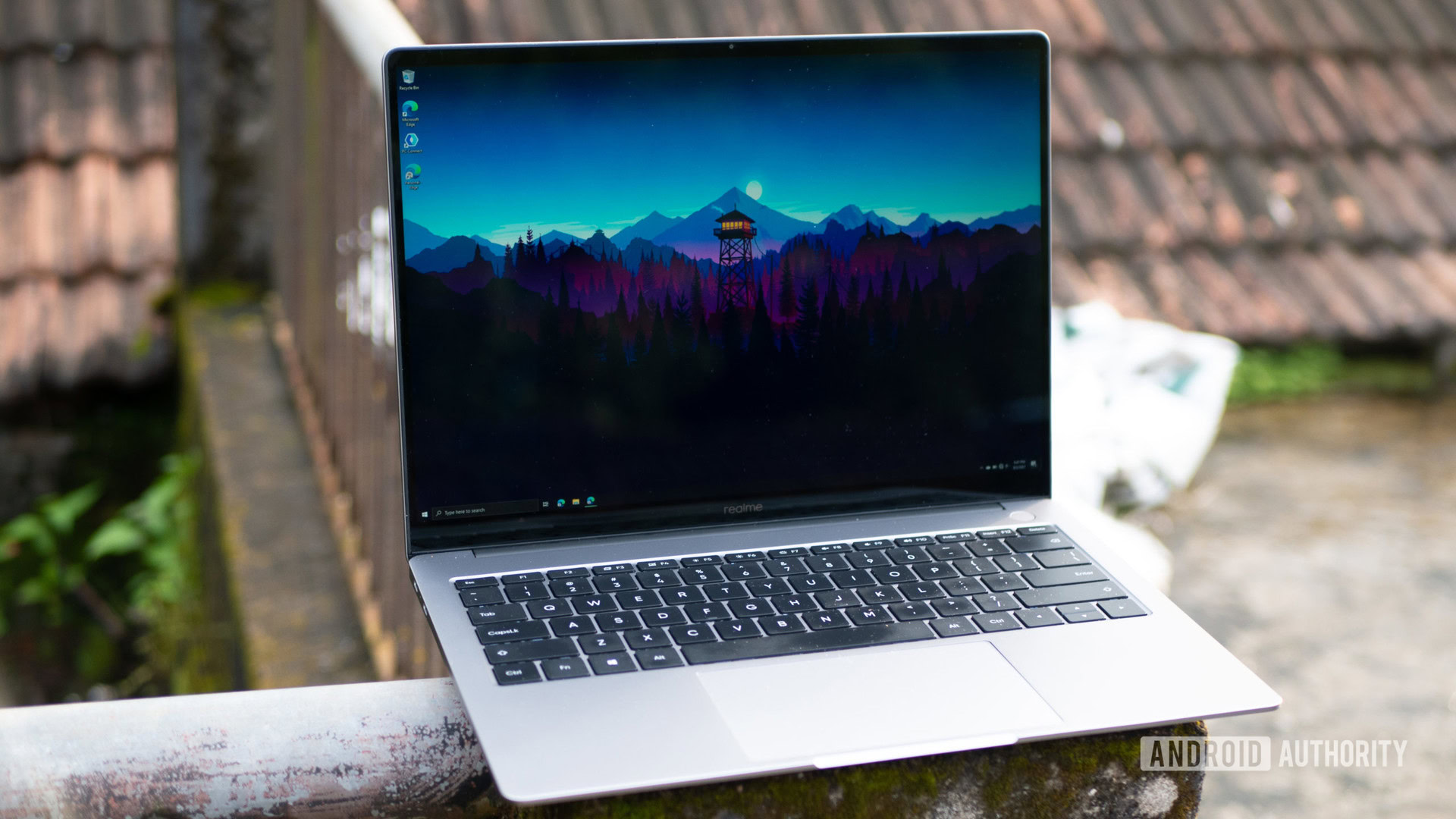
realme Book review: Compelling, but not complete
Published onSeptember 7, 2021
Realme Book
MSRP:
What we like
What we don't like
Realme Book
The realme Book is the first laptop from the house of BBK Electronics. The conglomerate’s most tenacious brand has been releasing a ton of phones since its inception, but this product marks realme’s debut in the laptop space. The realme Book is a productivity-focused laptop that enters a crowded market segment and comes with some solid specifications for the price.
The question is, is it worth your money? Let’s dive into Android Authority’s realme Book review to find out.
What you need to know about the realme Book

- realme Book Slim (Intel Core i3/8GB RAM/256GB SSD): Rs. 46,999 (~$644)
- realme Book Slim (Intel Core i5/8GB RAM/512GB SSD): Rs. 59,999 (~$822)
realme has three versions of the realme Book. The base model comes with an Intel Core i3-1115G4 CPU, 8GB of RAM, and a 256GB SSD. The second version comes with an Intel Core i5-1135G7 CPU and 8GB of RAM. These are the two versions that realme is bringing to global markets, including India, where it’s called the realme Book Slim.
The top-of-the-line version comes with the same Core i5 CPU, but gets 16GB of RAM instead, in addition to a fully flush display with a single sheet of glass covering the screen and the bezels. This version — the one we were sent for review — seems to be available only in China for now, priced at 4699 yuan (~$727). A 512GB NVMe SSD is standard across the Core i5 versions of the realme Book.
Related: The best laptops you can buy
The realme Book comes with an all-aluminum build and its most attractive feature — a 14-inch, 3:2 display with a resolution of 2,160 by 1,440 pixels. You also get a backlit keyboard, a large trackpad, and a single sign-on fingerprint reader. There’s a pair of USB-C 3.2 gen 2 ports on the Core i3 version of the realme Book. The Core i5 version gets one of those, and one Thunderbolt 4 port, which is not a common offering on laptops in this segment.
Stereo speakers are also on board along with a headphone jack. Charging is via USB-C, and realme gives you a 65W charger in the box. You get a choice of two colors: Real Blue and Real Grey.
The realme Book is priced starting at Rs. 46,990 (~$644), and the laptop is now available in India via Flipkart and realme’s India website. realme has not announced launched plans for Europe at the time of writing.
How is the design?
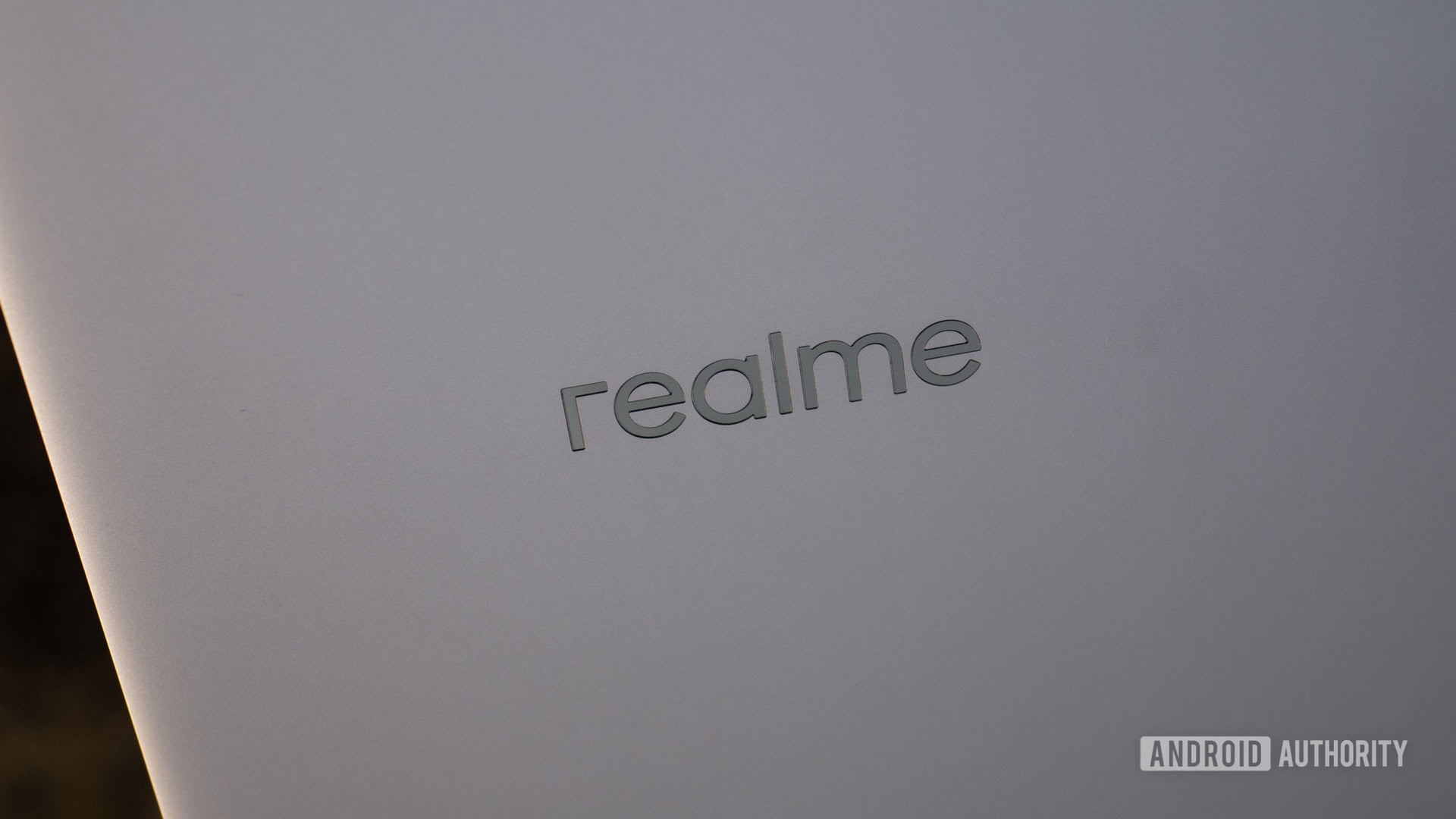
The realme Book follows the trend of many laptops we have seen emerge from China. It has the classic MacBook-inspired design that has become mainstream to such a degree it’s tough to even call these laptops out as MacBook clones. realme Book adjusts the look for a 3:2 form factor, and it’s one of the better laptops to implement this design.
realme has even avoided the classic mistakes: there are no edges too sharp, nor does the construction feel flimsy. Instead, the build feels solid, and there’s very little flex to the chassis. realme has a history of flashy design with the “Dare to Leap” motto painted across the back of some of its phones. However, with the realme Book, the company has taken a rather subtle approach, fit for laptops. You get the realme logo on the back of the laptop lid. “Dare to Leap” does make a subtle appearance on one of the rubber feet, where it’s much more acceptable.
The design isn’t all perfect, though. The laptop doesn’t feel the best when it’s actually on your lap. The rubber feet are quite thick, and the upper one runs right across the length of the laptop. Additionally, the laptop gets a bit toasty near the air vents, making it slightly annoying for lap use, especially if you’re wearing a thin piece of clothing. It’s also a smudge magnet. However, the slim profile and lightweight body offset these issues a bit.
The laptop strikes a decent balance between form and function and is one of the better-designed laptops you can find in this price range.
How is the screen?
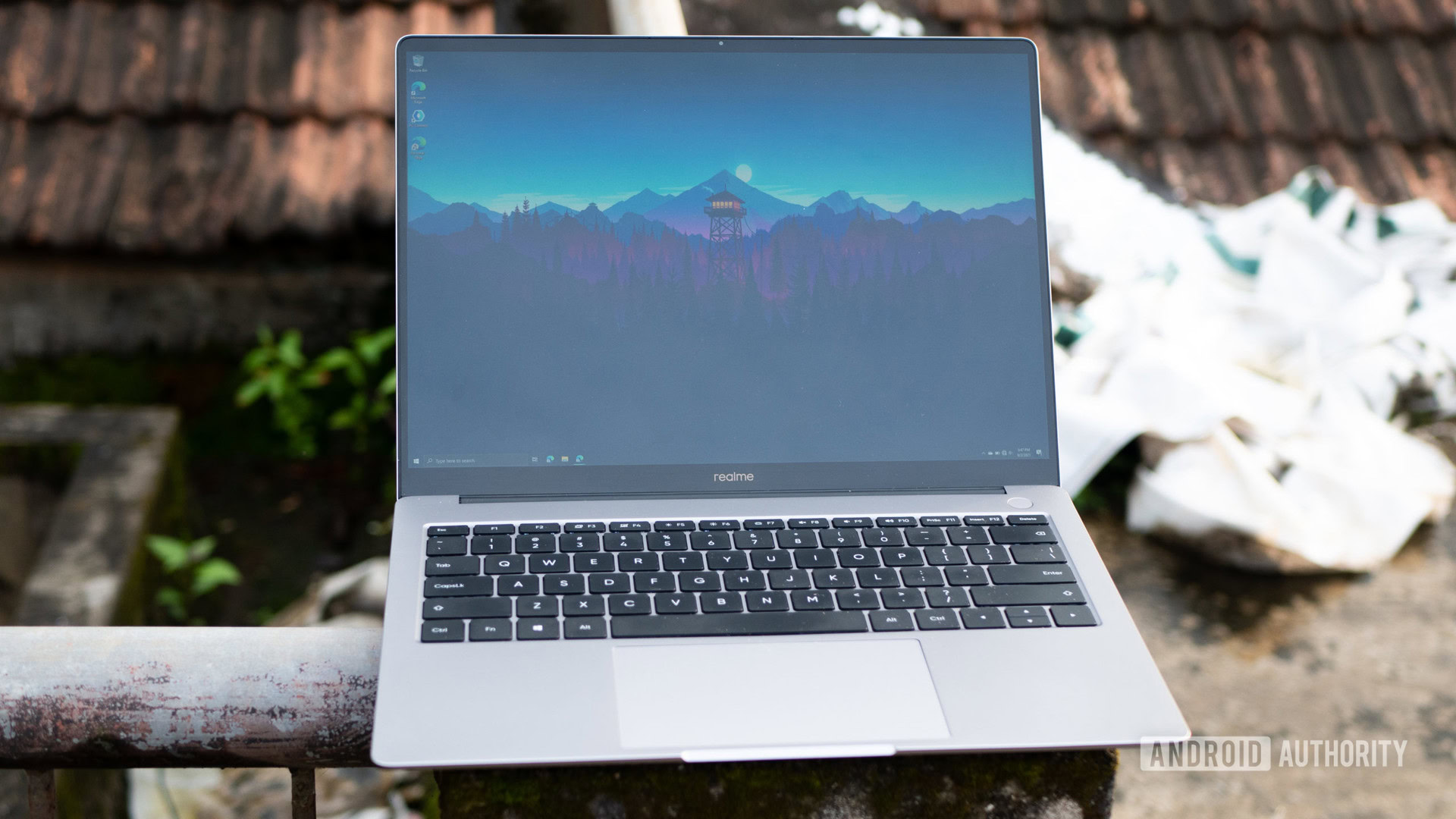
The screen is the real winner here. It’s a 14-inch display, and that 3:2 aspect ratio feels ideal for a smaller laptop. You get more vertical room on the screen, which definitely makes the realme Book a more usable machine.
Additionally, you get a solid resolution of 2,160 by 1,440 pixels. The display feels sharp, but the pixel density is not overdone, making for a well-balanced experience. UI elements and text didn’t look pixelated, but at the same time, I was able to set the scaling in Windows 10 to 100% and not have to squint.
The display has 100% sRGB coverage, making it very pleasing to the eyes.
The only issue with the screen is that it is glossy across all models. Don’t get me wrong, I prefer a glossy screen myself, but it can be a nightmare to use if you work in a bright environment. The upside on the realme Book is that the display is quite bright. So cranking up the brightness helped a lot with the overall visibility while outdoors.
The display on my unit also had some backlight bleed seeping in from the bottom edge, likely due to the tightness of the hinge. It didn’t bother me during my use at all, but it did show up when the laptop was at full brightness and displaying darker images. While this may not be present on all units, it’s another example of the quality control issues a first-generation product like this can have.
There’s another glaring bug that throws off the otherwise decent screen experience. The brightness hotkey (F5) goes to zero brightness when you crank it all the way to the lowest setting. This leaves the display looking like it’s switched off. This is a very fixable bug, and might already be fixed on units that are shipping. However it’s a bug that alters the experience, and one you should be careful of if you buy one of these laptops.
The high-end model we reviewed had a flush glass display, while the lower variants get a sunken screen with the bezels raised. The flush display did add to the premium feel, which the lower variants may lack. However, the display panel itself is the same, so your experience shouldn’t differ too much.
How is the battery life?

The realme Book packs in a 54Wh battery. realme promises 8.5 hours of battery life as per its testing for office usage. During my use, I got between five to six hours of battery life with medium usage.
My usage mostly included about 30 or so tabs in the Chromium-based Microsoft Edge, with a lot of switching, scrolling, and typing, and some YouTube video playback. The battery life on this laptop turned out to be below expectations when under load, especially since Edge is less stressful to the system given it suspends inactive tabs. Light usage did get me closer to 10 hours of battery life, but I’d have liked the laptop to do better under heavier loads. realme could have done a better job here.
See also: The best laptop deals
The realme Book comes with a 65W USB-C charger that also supports up to 30W Dart flash charging for supported realme phones. The charger managed to top up an empty battery to 50% in about 35 minutes. The time needed for a full charge varied between one hour 15 minutes to one hour 30 minutes. These figures are pretty decent if you work long hours away from an outlet, and need a quick top-up to get you through the day.
There’s one issue with the charging — the battery warms up, making the bottom of the laptop warm to the touch. It got quite a bit warmer than expected, and this could impact battery health considerably over time.
How powerful is it?
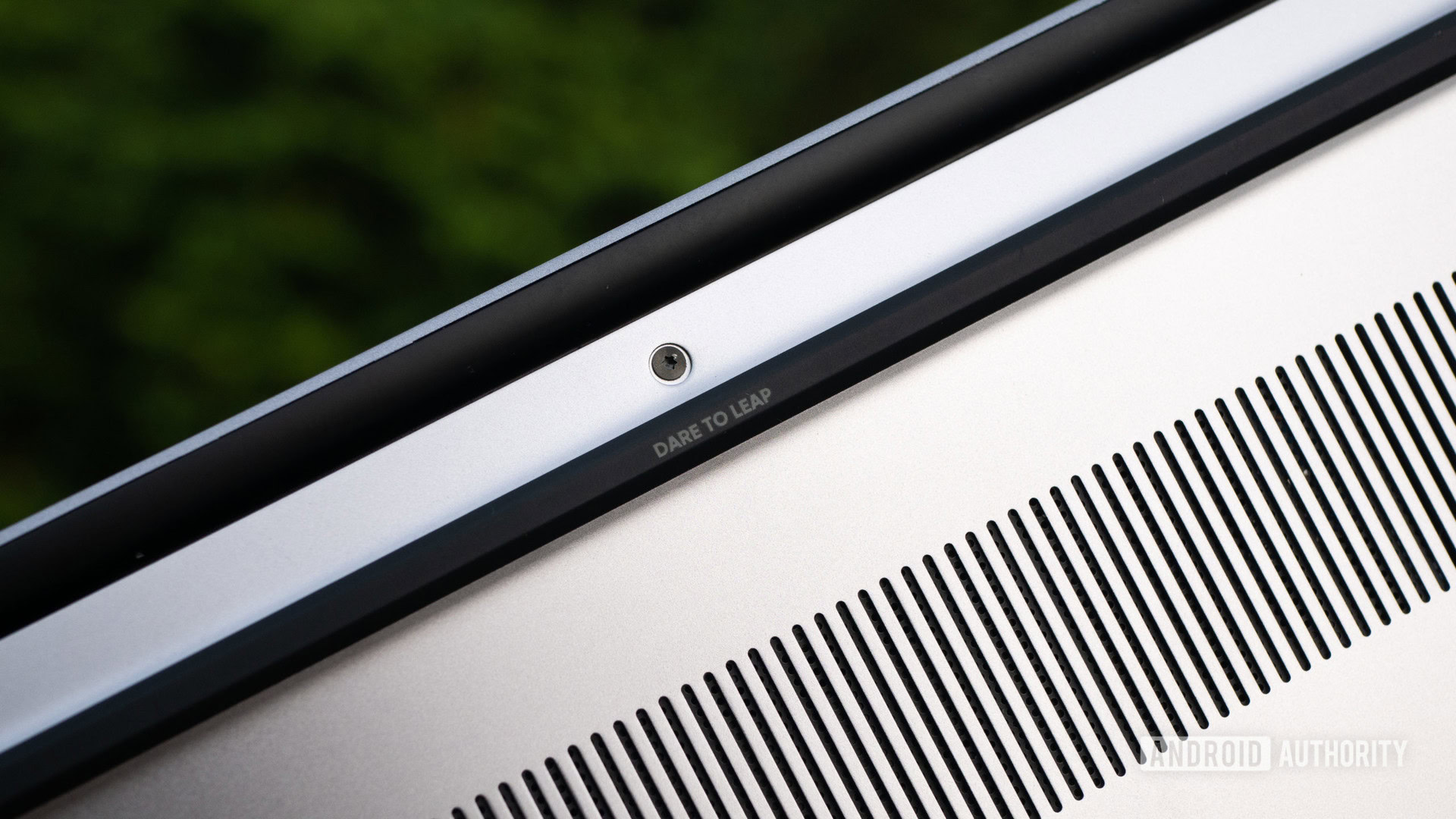
The 11th gen Intel Core i5-1135G7 is a solid performer. It felt snappy, and I never faced any slowdowns during my usage. The 16GB of RAM definitely helped. However, be mindful that this variant does not seem to be available in markets other than China right now.
While my experience was smooth, don’t expect this laptop to perform miracles. I’m a relatively light user, and this laptop should perform well for similar usages, such as office, home, or educational use. However, the CPU is only a 28W chip, which means that there’s not too much headroom for more CPU-intensive tasks, like video editing.
On top of that, the thermals on this laptop are rather questionable. I regularly use laptops on my lap. This one was more or less always warm to a point where I could feel it. In addition to that, it got even warmer while charging, as mentioned before. The temperatures didn’t reach burning hot, but the laptop always felt a bit uneasy to use.
The general thermal issues could be because of poor thermal paste application. Regardless, it seems like a problem that should not exist. The realme Book runs warm without being subjected to anything that can be considered unusual for a laptop of its stature. That cannot be a good thing in the long run.
Coming to the ports, there’s again some disappointment. You get two USB-C 3.2 gen 2 ports, with one supporting Thunderbolt 4, and one USB-A 3.1 gen 1 port. While I’m team USB-C all the way, I would have loved to see more ports onboard, like HDMI or collapsible ethernet, or at least an extra USB-A port. The Core i3 version skips Thunderbolt 4 too and provides a normal USB-C 3.2 gen 2 instead. It also gets slower wireless tech and slower RAM.
It’s great that realme didn’t go the traditional laptop way, with a USB 2.0 port. However, this laptop sits in a category aimed at the average user, and the omission of crucial ports is not ideal. The Core i5 version of this laptop does get Wi-Fi 6 to make up for the lack of an ethernet port, but that’s still not a fair trade-off.
Anything else?
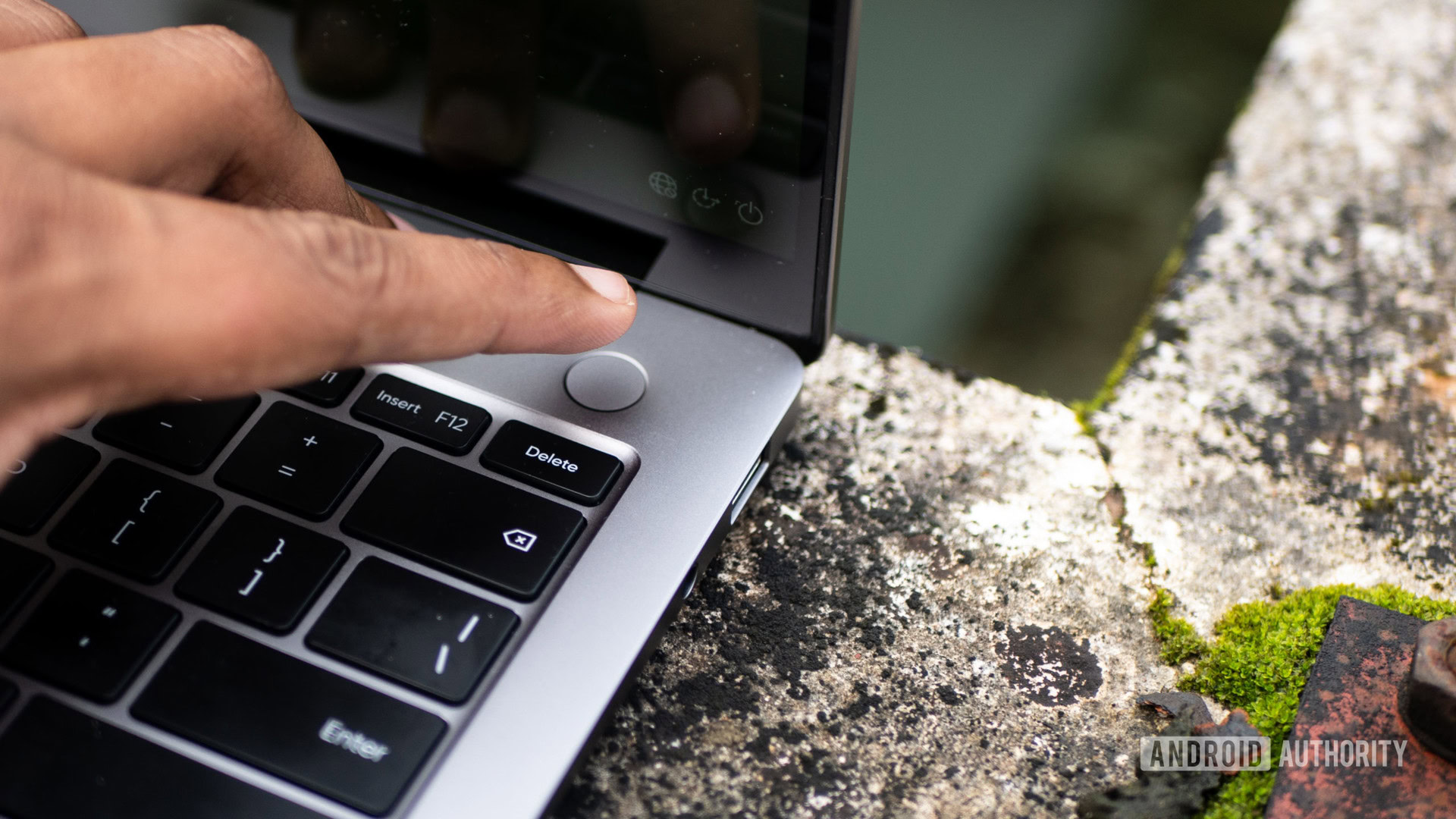
- Keyboard: The keyboard is pretty solid to type on, but the backlight has a mind of its own. It refuses to light up again after the keyboard sits idle for a while, requiring a press of the F7 keyboard backlight key to get it to work again.
- Speakers: The audio quality is pretty great, but it feels muffled at times.
- Webcam: The 720p HD webcam is pretty good, especially given its resolution. A 1080p webcam with this kind of quality would’ve done wonders.
- GPU: The integrated Intel Iris Xe GPU is an improvement over basic Intel HD graphics. Don’t expect the realme Book to handle anything more than light gaming, though, especially given that this is a 28W chip. The Core i3 version gets the Intel UHD graphics, which are weaker than the Iris Xe.
- Windows 10: The realme Book runs Windows 10 Home, with a Windows 11 upgrade promised. You also get Microsoft Office Home and Student pre-installed.
- Biometrics: The fingerprint reader is of the single sign-on kind, which means one press to boot up the laptop is all it takes. The scanner is very responsive too.
realme Book specs
| realme Book | |
|---|---|
Display | 14-inch display 2,160 x 1,440 resolution 3:2 aspect ratio 100% sRGB coverage |
Processor | 11th Gen Intel Core i3-1115G4 Processor, 3.0GHz with Turbo Boost Up to 4.1GHz 11th Gen Intel Core i5-1135G7 Processor, 2.4GHz with Turbo Boost Up to 4.2GHz |
GPU | i3: Intel UHD graphics i5: Intel Iris Xe Graphics |
RAM | 8/16GB LPDDR4x i3: 3,733MHz i5: 4,266MHz |
Storage | 256/512GB PCIe NVMe SSD |
Wireless | i3: Wi-Fi 5, Bluetooth 5.1 i5: Wi-Fi 6, Bluetooth 5.2 |
Ports | i3: 2 x USB-C 3.2 Gen 2 1 x USB-A 3.1 Gen 1 i5: 1 x Thunderbolt 4/USB 4 1 x USB-C 3.2 Gen 2 1 x USB-A 3.1 Gen 1 |
Keyboard | 1.3mm key travel |
Touchpad | Multi-touch with support for Windows Precision drivers |
Webcam | 720p (HD) with Vocplus AI noise cancellation |
Audio | 2 x 2W Stereo speakers by Harman Support for DTS 3.5mm combo audio jack In-built dual microphones |
Battery and Power | 54WHr 65W USB-C PD power adapter |
Weight and Dimensions | 307.21mm x 228.96mm x 14.9mm 1.38kg |
Value and competition

We’re going to judge the value of the Core i5/8GB RAM model, given that it’s available in all markets where realme is selling this laptop rather than the China-only Core i5/16GB RAM model we were sent to test.
The former variant carries a hefty price tag of Rs. 59,999. Although it’s available at a slightly lower price of Rs. 56,999 at the time of writing as part of a promotion, it still isn’t the best value proposition, given the multiple issues.
Competitors include the HP 15s (Rs. 51,890), the Lenovo IdeaPad Slim 5 (Rs. 57,990), and the RedmiBook Pro (Rs. 49,999). The HP 15s makes the strongest case against the realme Book, with the option to pick between Ryzen 5000 processors and 11th Gen Intel i5 chips.
The RedmiBook Pro comes from realme’s rival brand, and has a terrible display, especially in comparison to the realme Book. While the realme Book looks better on paper, neither of them make for a particularly solid purchase, even given the excitement around the laptop-made-by-a-phone-brand factor.
Unless we see the Core i5/16GB RAM version release in India, if you really want to buy the realme Book we suggest opting for the i5/8GB version (also known as the realme Book Slim), and even then only if you’re a light user. You’ll be getting a great display for the price, even with the software issues.
However, realme should consider making the more powerful variant more widely available. It should also consider pricing it more aggressively because the current pricing isn’t competitive enough to ignore some of the issues that the realme Book has.
realme Book review: The verdict
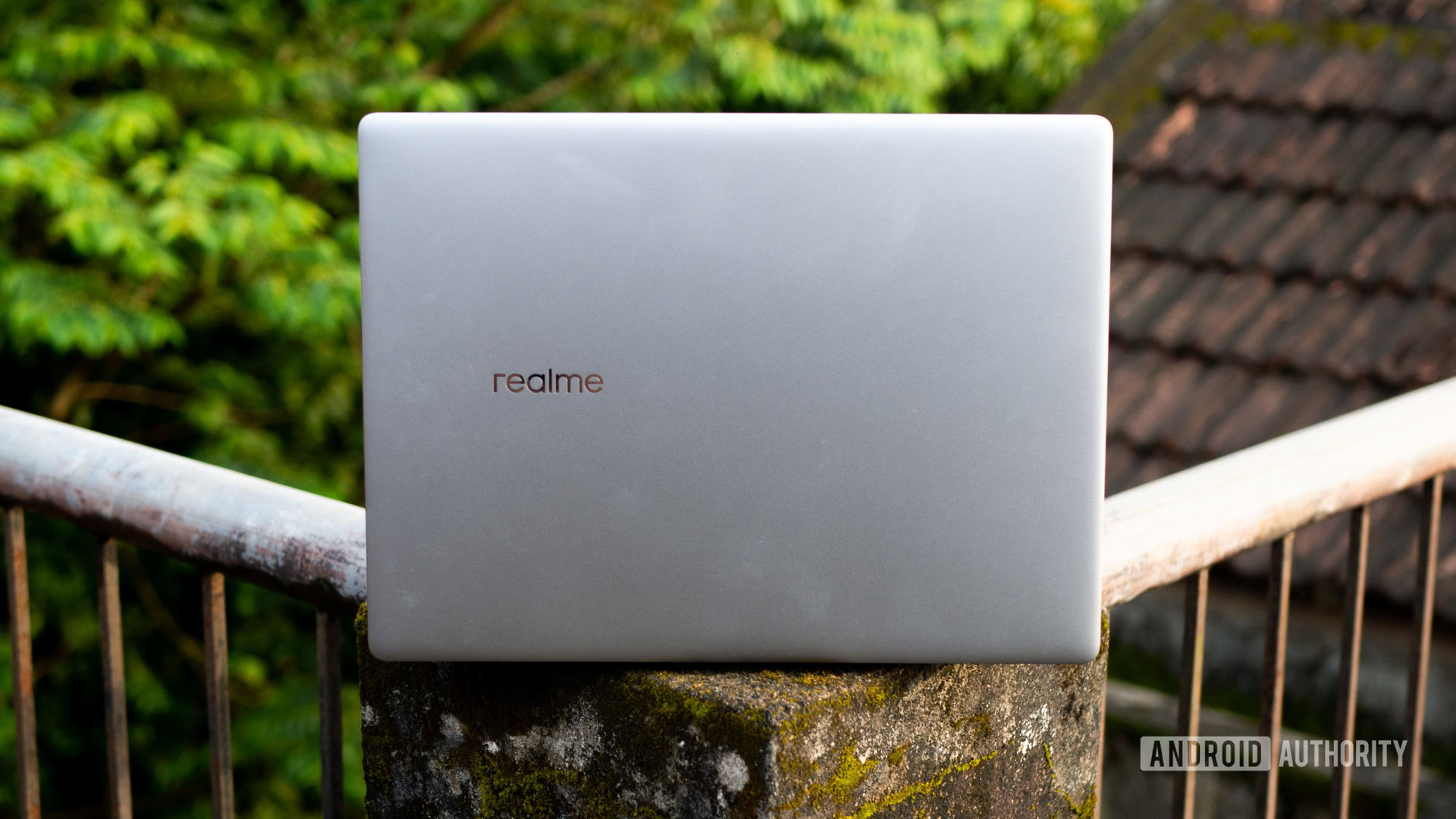
The realme Book is a solid laptop on paper. It has an amazing display that rivals screens from laptops costing twice as much. The other specifications stack up nicely, too.
In reality, the realme Book has all the problems of a first-generation product. It’s an unfinished product and has many little issues that drag down its appeal. It feels very realme to me, which means it is, overall, unpredictable.
I loved the idea of the laptop before testing it, but during my use, I have come to see it for what it really is — a public beta test.
The realme Book feels like a test for BBK Electronics to check out the laptop waters, to gauge interest, and to eventually use one of its more popular brands to release a more finished laptop, with even greater pomp.
So should you buy one? It’s not terrible value, and the display is reason enough to recommend it. However, I would advise you to look both ways before crossing this road. If a pretty display is all you want, this laptop will get the job done, but for everyone else, there are small frustrations that could ruin the experience.
If you want something more affordable, that’ll last you a while, and be a little more polished, then you may want to wait for one of the other BBK Electronics brands to launch a laptop. Maybe a OnePlus Book? If nothing else, wait for a sequel to this realme Book that will address the issues this laptop has.
If your needs are urgent, though, you should consider looking elsewhere. This laptop sits in a crowded market segment, and there are plenty of other laptops capable of delivering a more reliable experience.